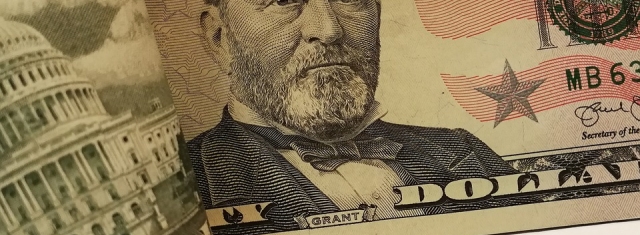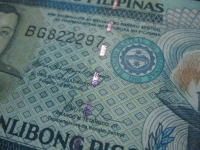Technology
Banknotes, what you didn´t know about security printing
Banknotes & security printing

United States fifty-dollar bill (Source: http://maxpixel.freegreatpicture.com)
USPA NEWS -
There is no better security system than one that is completely unknown to all but the producer. However, a dive into the known security measures of secure printing, as well as a few hints of what may exist, gives new insight on how highly technological banknotes are made to keep them secure.
Banknote production units can be considered as fortresses, and the security measures they deploy greatly exceed their walls. Supply chains are tightly controlled, upstream and downstream, plants have secure access, and employees are regularly screened. Zhomart Kazhmuratov, head of the Kazakh Printing works, says that “since (its) company is a restricted access enterprise, a special inspection of candidates is provided“ in his plant. Comparably high security measures apply to the engineering firms which design and sell the special printers on which the banknotes are produced. The same goes for all components: paper, inks, holographic devices and other security features, the sales of which are strictly controlled.
Those security features, a few of which are known to the public, constitute the backbone of the large security wall which protects our hard currency. The main threat to cash is counterfeiting. Banknote printers push the limits of technology every year, and create four type of security features, according to the angle: some are felt, some are seen in a direct perspective, some are seen at an angle and, finally, some are contained within.
The grain of the material is designed to give a distinctive feel, when finger-tips are rubbed on the surface. So, shopkeepers and store owners can quickly develop the ability to detect fraudulent money. On the occasion of a new banknote released in the UK in 2011, the Telegraph gave tips to detect forgeries (1): “Banknotes are printed on special paper that gives them their unique feel. By running your finger across the note, you can feel raised print in areas such as the words “˜Bank of England´ on the front.“ The paper or polymer surface have their specific feel, and the print is also raised, not flush, to create another marker.
When held in the light, banknotes will present further security features, such as the ultra-fine print, and see-through drawings and a security thread. The complexity and multi-layer nature of this design aims at preventing simple copying of the bills. In the past few decades, high-quality printing machines and software has become available to the general public, something banknote designers have taken into account. Scanning a banknote, even in a top-tier copier, is pointless. Rick Maybury tried (2), and reported: “The best-known banknote copy protection feature is the so-called EURion constellation, used by more than 50 countries ““ including the UK -- and all Euro region notes. It´s a discrete pattern of dots or rings, usually coloured yellow, orange or green, in the shape of Orion star formation. They can be disguised as musical notes or made very small and repeated (as on the £10 note). Software in colour copiers and some PC image editing and scanning programs (Adobe PhotoShop, PaintShop Pro etc.), recognise the pattern and display the message you´ve been seeing (refuses to print - editor´s note).“
When tilted, the angle formed between the source of the reflected light and the viewer´s eye will create movement on the bill, very difficult to reproduce faithfully. The surface drawing will fade, revealing the in-depth drawing printed behind it, and “emerald numbers“ will shift their reflection up and down. Oberthur Fiduciaire printed the new krone banknote series issued by Norway in 2011, about which Arthur Friedberg (3) reported: “Among the “enhanced features“ cited by the [Norges] bank are intaglio printing, tactile markings for the blind, a floating ring in a color-changing rectangle, three segments of an anchor chain integrated into the paper that appear to move or run out when the note is tilted (on all but the 50-krone note), a watermark with the head of an Atlantic puffin, and a security thread.“ Oberthur Fiduciaire is also in charge of some euro-banknote design and production, as well as supplying 70 other central banks in the world with currency.
For the company, technology-intensive R&D is the cornerstone of the craft. Its CEO, Thomas Savare, relates: “We have to master the job of integrating different technologies, different substrates and different security features. We have to do that within an environment that is highly industrial, because we´re supplying billions of individuals with products that are numbered and personalized. And these products need to be so secure that forgery would be impossible, with the resistance needed to last the day-to-day use of a banknote.“
Finally, banknotes are designed to display specific properties according to the light which is shed upon them, be it daylight, UV light, short-wave UV light (known as UVC) or infrared. All of these types of lights will reveal additional markers in a banknote, as described (4) by the Daily Mirror: “With higher denomination bills things are a little simpler. $5, $10, $20, $50 and $100 bills all include an embedded security thread that shows up under a UV light as well as a watermark that's visible if you hold them up to the light.“ Combined with the other visible security features, and those which remained kept from the public, perfect imitation is nearly impossible.
A banknote, to be effective and resilient, must be protected from all sides. They are subjected to potential theft, degradation, counterfeiting, as well as inflation - though that part is for governments and economists to deal with. Despite dwindling of the share of cash transaction in European and American economies over the past few decades, the levels of security embedded within banknotes may well be what saves it: as cashless payments rise, they are increasingly subjected to fraud. And as it turns out, it doesn´t take much brains to defraud a bank or a consumer, whereas making a halfway decent bill is no deed for the clumsy.
1) http://www.telegraph.co.uk/finance/economics/8862468/How-to-spot-a-fake-bank-note.html
2) http://www.telegraph.co.uk/technology/advice/8597875/Why-cant-I-scan-a-banknote.html
3) http://www.coinworld.com/news/paper-money/2016/12/norways-new-notes-all-have-a-maritime-theme.all.html
4) https://www.aol.co.uk/money/2017/08/02/how-to-spot-fake-currency-on-holiday-euros-dollars/
1) http://www.telegraph.co.uk/finance/economics/8862468/How-to-spot-a-fake-bank-note.html
2) http://www.telegraph.co.uk/technology/advice/8597875/Why-cant-I-scan-a-banknote.html
3) http://www.coinworld.com/news/paper-money/2016/12/norways-new-notes-all-have-a-maritime-theme.all.html
4) https://www.aol.co.uk/money/2017/08/02/how-to-spot-fake-currency-on-holiday-euros-dollars/
Liability for this article lies with the author, who also holds the copyright. Editorial content from USPA may be quoted on other websites as long as the quote comprises no more than 5% of the entire text, is marked as such and the source is named (via hyperlink).






